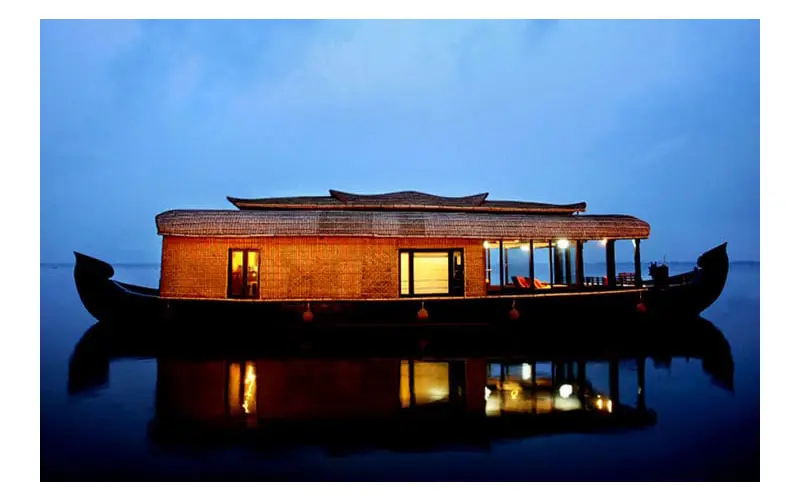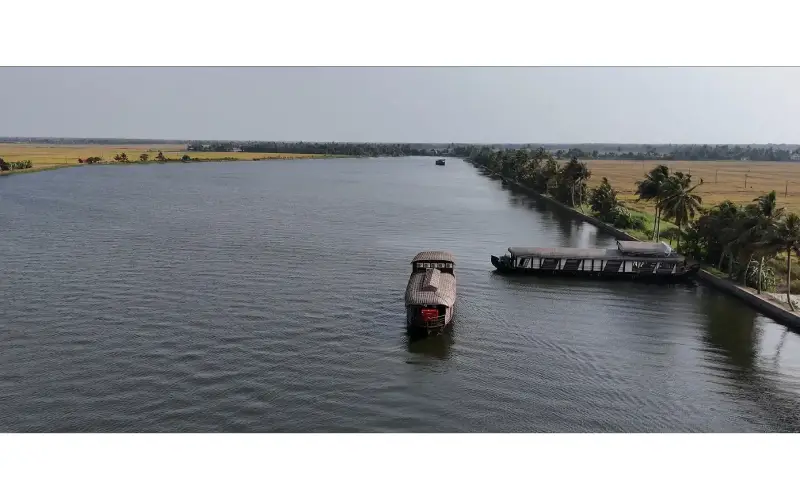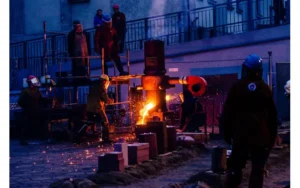Kerala Tours Rich Culture with These Must See Historical Sites

Kerala, often referred to as “God’s Own Country,” is a mesmerizing destination offering a rich tapestry of history, culture, and natural beauty. While the state’s breathtaking landscapes of serene backwaters, pristine beaches, and lush hill stations captivate many, Kerala is also home to a deep cultural heritage that spans centuries. The blend of various influences Hindu, Muslim, Christian, and European has created a unique cultural mosaic, reflected in its temples, forts, palaces, art forms, and historic sites. For travelers looking to immerse themselves in Kerala’s past, the state offers a wealth of ancient monuments and sites steeped in history. This article takes you through some of the must-see historical sites on Kerala tours, shedding light on the state’s ancient temples, colonial influences, royal palaces, majestic forts, traditional art forms, historical spice routes, and architectural wonders. Whether you are a history enthusiast or someone with a keen interest in culture, Kerala promises an enriching journey through time, where each visit unfolds stories of its glorious past.
Discover Ancient Temples On Kerala Tours
Kerala tours ancient temples are not just places of worship; they are veritable treasures of history, art, and architecture. These temples, often built in the traditional Kerala style, showcase the grandeur and intricacies of Indian religious architecture. A visit to Kerala is incomplete without exploring its sacred spaces, such as the famous Sabarimala Temple, one of the most revered pilgrimage destinations in the country. Dedicated to Lord Ayyappa, this temple is known for its rich history and its connection to the Sabarimala pilgrimage, attracting millions of devotees every year. Another remarkable temple is the Padmanabhaswamy Temple in Thiruvananthapuram, renowned for its architectural excellence and ancient history. The temple’s vast collection of gold and precious artifacts make it one of the wealthiest temples in India. The intricate carvings, murals, and sculptures that adorn the walls of these temples offer a glimpse into the artistry of the bygone era, and each temple tells a story of devotion, sacrifice, and cultural evolution. Kerala’s temples also reflect the socio-cultural diversity of the state, incorporating unique architectural styles influenced by Dravidian, Keralite, and Vijayanagara traditions. Whether it’s the mystical ambiance of the Ettumanoor Mahadeva Temple or the historic ambiance of the Guruvayur Temple, Kerala’s ancient temples are bound to captivate your imagination and offer an unforgettable experience.

Explore Kerala Tours’ Colonial Heritage
Kerala’s colonial history is marked by the presence of European powers, primarily the Portuguese, Dutch, and British, whose influence is still visible in the architecture, culture, and urban design of the state. The colonial period played a significant role in shaping Kerala’s modern identity, and exploring this rich history is an essential part of any Kerala tour. The port city of Kochi, for example, stands as a testimony to Kerala’s colonial past, with its Dutch Palace, St. Francis Church, and the iconic Chinese fishing nets. The St. Francis Church in Fort Kochi is notable for being the oldest European church in India, and it is the place where the famous Portuguese explorer Vasco da Gama was initially buried. The Dutch Palace, also known as Mattancherry Palace, is a stunning example of the fusion of traditional Kerala and European styles of architecture. The murals and artifacts housed here offer insights into the region’s colonial history, showcasing the artistic evolution during the European era. Another historical site in Kerala is the town of Bekal, which has a fort built by the Portuguese, now standing as a prominent landmark in the region. The blend of Portuguese, Dutch, and British architectural influences in Kochi and other parts of Kerala offers a rich historical narrative for those keen on understanding the state’s colonial legacy. Kerala’s colonial heritage offers a unique glimpse into how foreign influences intermingled with local traditions, leaving a lasting impact on the culture and architectural landscape.
Kerala Tours Highlighting Royal Palaces
Kerala’s royal history is woven into the state’s intricate cultural fabric, and no tour would be complete without exploring its regal palaces, which showcase the opulence and grandeur of Kerala’s royal families. These palaces not only stand as architectural marvels but also serve as important symbols of Kerala’s rich heritage. One of the most notable royal residences is the Hill Palace in Tripunithura, which was once the home of the Kochi royal family. The palace, with its sprawling gardens, exquisite architecture, and art collections, offers an insight into the lifestyle and traditions of Kerala’s royalty. Another significant royal palace is the Krishnapuram Palace, located near Alappuzha, which is known for its murals and the stunning portrayal of Kerala’s royal art. The palace houses several artifacts, weapons, and antique items that once belonged to the royal family. The Padmanabhapuram Palace, situated in the Kanyakumari district, although part of Tamil Nadu, is another example of Kerala’s royal heritage. The palace is an excellent example of traditional Kerala-style architecture, with wooden carvings, murals, and antique furniture, reflecting the artistic and architectural splendor of the Travancore dynasty. These royal palaces, along with other lesser-known ones scattered across Kerala, tell the stories of rulers who once governed the land and offer visitors a chance to step into a time of luxury and grandeur.
Kerala Tours And The Richness Of Forts
Kerala is dotted with majestic forts, which were once critical to the region’s defense and played an important role in shaping the history of the state. These forts are not just remnants of Kerala’s military history but are also architectural masterpieces that reflect the cultural and strategic significance of the time. Fort Kochi, with its Dutch, Portuguese, and British influences, offers visitors a chance to experience a mixture of architectural styles within its fort walls. The most iconic among them is the Fort Kochi Fort, originally built by the Portuguese and later renovated by the Dutch. This fort is a perfect blend of colonial architecture and traditional Kerala elements. Another important fort is the Bekal Fort in the northern part of Kerala, a massive structure that overlooks the Arabian Sea. Bekal Fort is known for its well-preserved architecture and strategic location, providing stunning views of the coastline. Further inland, the Palakkad Fort stands as a testament to the region’s military history, having been built by the British in the 18th century. Each fort has a unique history, offering visitors a deep dive into Kerala’s strategic past, military advancements, and the history of colonial rule. Whether you are a history buff or a photography enthusiast, the forts of Kerala are essential landmarks to explore during your travels.
Unveiling Kerala Tours’ Traditional Art Forms
Kerala is renowned for its rich and diverse traditional art forms that have been passed down through generations. These art forms, deeply rooted in Kerala’s cultural fabric, offer a glimpse into the state’s spiritual and historical significance. A Kerala tour would be incomplete without experiencing the mesmerizing classical dance form of Kathakali, a vibrant performance that combines dance, music, and storytelling to narrate mythological tales. The classical art of Mohiniyattam, another dance form specific to Kerala, is equally enchanting with its graceful movements and lyrical storytelling. Visitors can attend live performances in various cultural centers, where they can witness these dances firsthand. Kerala is also home to the traditional martial art of Kalaripayattu, which dates back over 3,000 years. Kalaripayattu training centers allow visitors to observe practitioners as they demonstrate the skills and techniques of this ancient martial art, which combines physical postures with intricate weaponry and meditation practices. Additionally, Kerala’s rich tradition of visual art, seen in the murals of its temples and palaces, is worth exploring. These murals, often depicting scenes from Hindu mythology, are known for their vibrant colors and intricate designs. Exploring Kerala’s traditional art forms allows travelers to not only appreciate the state’s artistic excellence but also gain a deeper understanding of its cultural identity.
Kerala Tours Exploring Historic Spice Routes
Kerala’s history as a center of trade and commerce is intricately tied to its position as a key player in the ancient spice trade routes. Known as the “Spice Coast,” Kerala has been trading in spices such as black pepper, cardamom, cloves, and cinnamon for over 2,000 years. The historic spice routes were integral to the trade between India, the Middle East, and Europe, and they helped Kerala emerge as a vital link in the global trade network. On a Kerala tour, visitors can explore the region’s spice plantations, such as those in Thekkady and Wayanad, where spices are cultivated in abundance. The Spice Market in Kochi is another place where the legacy of this historic trade is still visible, with local vendors selling aromatic spices in colorful markets. The ancient city of Muziris, once a bustling port town, was the focal point of the spice trade and is now an archaeological site that offers a glimpse into Kerala’s past as a center of commerce. The Muziris Heritage Project is a major initiative aimed at preserving and promoting the region’s spice trade heritage. The Kerala spice route was not just about the exchange of goods but also the fusion of cultures, as traders from different parts of the world brought their customs, languages, and beliefs. Exploring Kerala’s spice routes allows visitors to connect with the state’s rich history of international trade and cultural exchange.
Kerala Tours Featuring Architectural Wonders
Kerala’s architecture is a testament to its rich cultural and historical legacy, with structures that reflect a fusion of various styles, including traditional Kerala architecture, colonial influences, and modern designs. The temples of Kerala are among the most striking examples of the region’s unique architectural style, with their wooden structures, tiled roofs, and intricate carvings. The architecture of Kerala’s forts and palaces, such as those in Kochi, Thiruvananthapuram, and Kottayam, blends European and local styles, creating stunning landmarks that narrate the state’s colonial past. Other architectural wonders include the intricate wooden houses in the traditional Kerala style, which feature sloping roofs, narrow verandas, and open courtyards. These houses, still present in rural areas, provide insight into the architectural evolution of the region. Kerala’s churches and mosques also contribute to its architectural diversity, with some structures showcasing Indo-European styles and others built in traditional Kerala architecture. A visit to the sacred St. Thomas Syro-Malabar Church in Palai or the Mappila Mosque in Malabar offers an opportunity to explore Kerala’s religious architecture. Whether it’s the historic structures in the old quarters of Fort Kochi or the magnificent temple complexes in the heart of the state, Kerala’s architectural wonders are a key feature of any historical tour.
Conclusion
Kerala’s historical sites are a testament to the state’s deep cultural heritage and rich past, making it a must-visit destination for anyone interested in exploring India’s history and culture. From its ancient temples and royal palaces to its colonial influences and traditional art forms, Kerala offers a wealth of experiences that transport visitors back in time. The state’s forts, spice routes, and architectural wonders further enhance its appeal, providing a unique opportunity to uncover the stories of rulers, traders, and artists who shaped Kerala’s legacy. Whether you’re a history enthusiast, an art lover, or a cultural traveler, Kerala’s historical sites are bound to leave a lasting impression, offering a glimpse into the heart of a region that has been at the crossroads of history, culture, and trade for centuries. A Kerala tour is more than just a journey through landscapes it’s an exploration of a rich, diverse heritage that continues to thrive in the modern world.

Jon Burton, a dedicated advocate for education reform, navigates the landscape of learning with passion and purpose. With a profound belief in the transformative power of education, Jon explores innovative approaches to teaching and learning, seeking to inspire and empower students of all ages. Through his writings, he shares insights into educational theory, curriculum development, and classroom practice, aiming to foster a culture of lifelong learning and intellectual curiosity.








